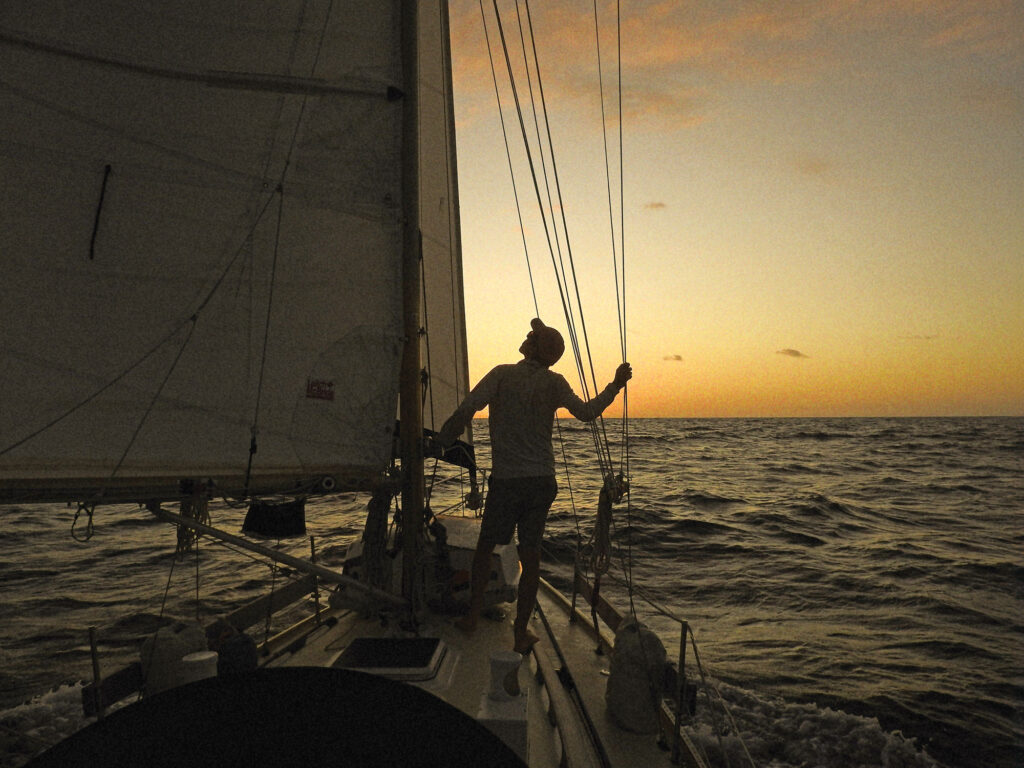
We learned a great word from French cruising friends: bricolage. It’s defined as “something constructed or created from a diverse range of available things.” It encompasses our experience as offshore cruisers, and as boat owners in general. We’ve spent much of the past six years trying to construct a functional offshore cruising boat from diverse, and often limited, things.
The most limited thing, for us, has been money. We started our tenure as boat owners on an extremely tight budget. Things that would have made our lives easier—dock space, regular haulouts, new equipment—often felt out of reach.
That said, one thing has always been available no matter where we were in the world, or how little was left in the bank account: help. We have found, to our surprise, that there is a boating community to hold us up all the way.
We purchased Wild Rye, our 1971 Wauquiez Centurion 32, in December 2017. We had $30,000 and two goals: to sail around the world and, leading up to that, to refit the boat ourselves. We wanted to know our boat inside out, and to have the skills to fix whatever problems might arise.
Our refit settled into a pattern of being unable to afford to do things the straightforward way, and then relying on more-creative methods. We’ve had mixed results.
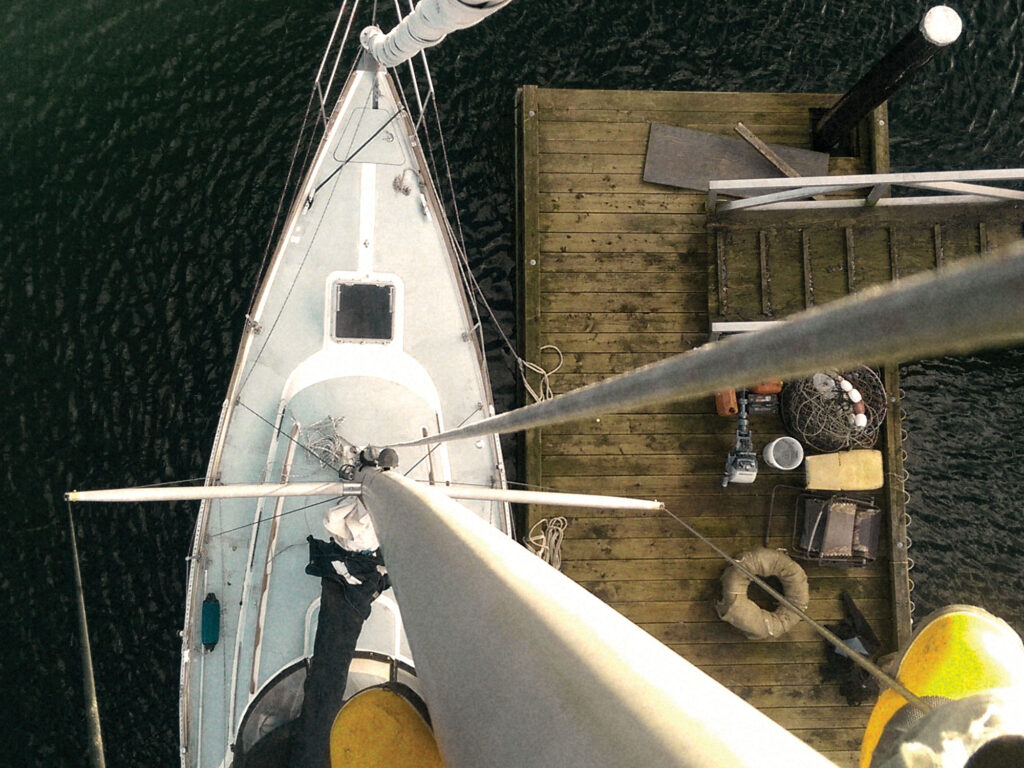
The first, and nearly disastrous, example of our cheap-and-cheerful approach was when we decided to inspect Rye’s hull below the waterline. Wanting to avoid a haulout on Vancouver Island, which was a 20-mile daysail away, we attempted to dry out at the public pier near our home on Salt Spring Island. Armed with several old tires and a 2-by-6 for fenders, we tied up. As the tide went out, Rye settled down onto the wooden 4-by-4s that my partner, Liam, had planted in the mud in place of a grid.
We celebrated for one brief moment before watching in horror as Rye began to slide sideways, her topsides inching perilously closer to the pier’s struts. Much shouting and frantic action ensued, ending with Rye leaning hard against her fenders, mast angled sharply over the pier, but stable.
Liam clambered over the side of the pier and spent several hours trudging through the sucking mud, making notes in the fading evening light, while I sat shaking onshore. This DIY stuff was not for the faint of heart. We motored home on the high tide at 0200. Rye had survived our first attempt more or less unscathed, but there obviously were improvements to be made in our technique.
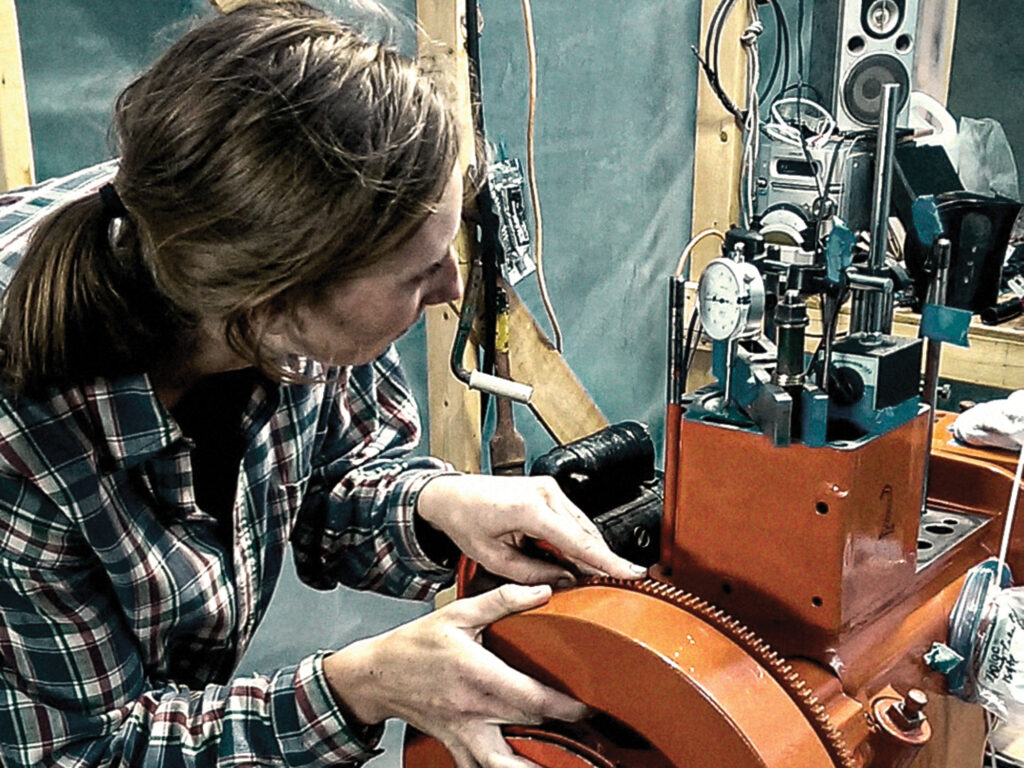
Our second project was to upgrade the standing rigging. We wanted to lower the deck-stepped mast to reinforce the compression post and replace every shroud, stay, and fitting with an upsize version. Liam built a wooden jig, and we lowered the mast while Rye sat in borrowed space at a friend’s dock.
With the help of many sets of hands and a friend’s truck, we wrangled the mast off Rye’s deck and into our backyard. That went fine, but around the same time, Liam also completed what would be our most disastrous project: pulling out Rye’s old Volvo Penta MD2B engine and replacing it with a newer used engine.
He disconnected the engine, towed Rye (engineless and mastless) around the island with a tender tied to the boat’s starboard side, and lifted out the engine using the community crane at a government wharf, with friends and family there to help.
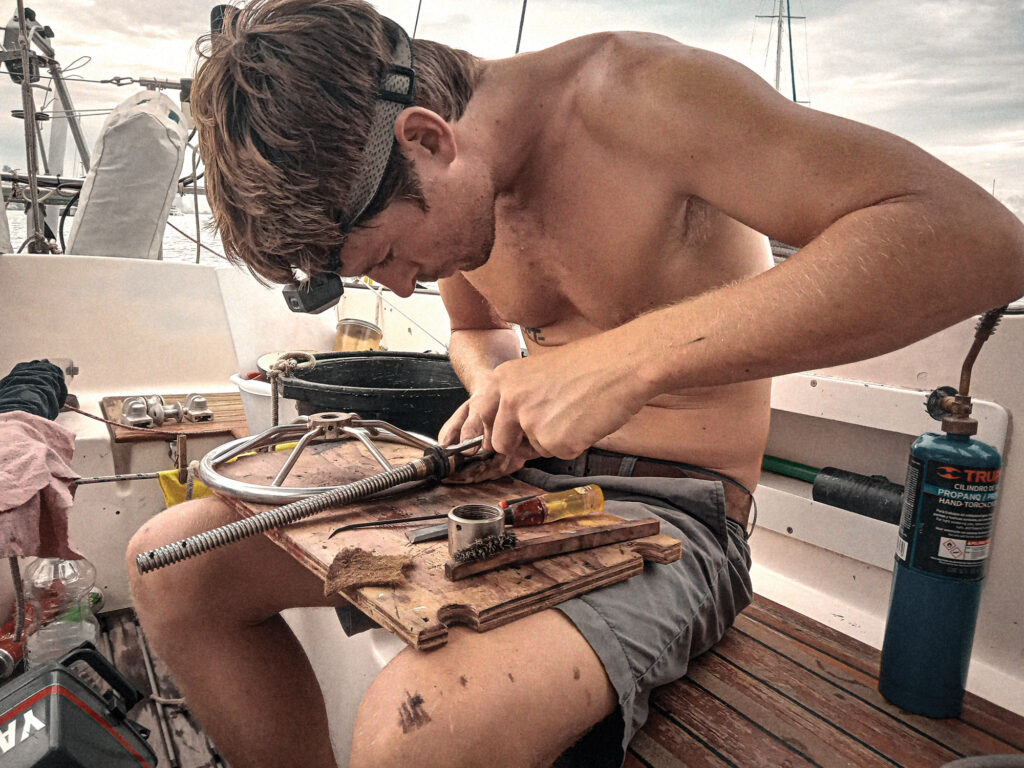
Our replacement engine died a permanent death just two weeks into our shakedown cruise in Desolation Sound. We were devastated, but amazingly, we knew what to do. We tied the dinghy to Rye’s hip, towed the boat around to a different government wharf, and hauled out that dead engine with the community crane. Then we spent six weeks rafted up at the government wharf, repowering (with a brand-new engine this time) in the company of several other cruisers who were just as deep into their own DIY projects.
When it came time to install the new propeller to accompany our new engine, we motored around (via the trusty dinghy side-tie method, of course) to dry out at a pier that had a grid in place. Rye sat perfectly alongside the pier, going up and down with the tide for three days while we handled an incredible variety of problems. A local fisherman who often stopped to inspect our progress raised an unimpressed eyebrow when we told him how we had moved Rye to the pier sans engine: “Better luck than judgment,” he said.
We did eventually complete the essential items in our refit, and, in 2019, we sailed out the Strait of Juan de Fuca and turned left for Mexico. We hopped down the coast of the Americas as far as Panama, fixing and improving as we went.
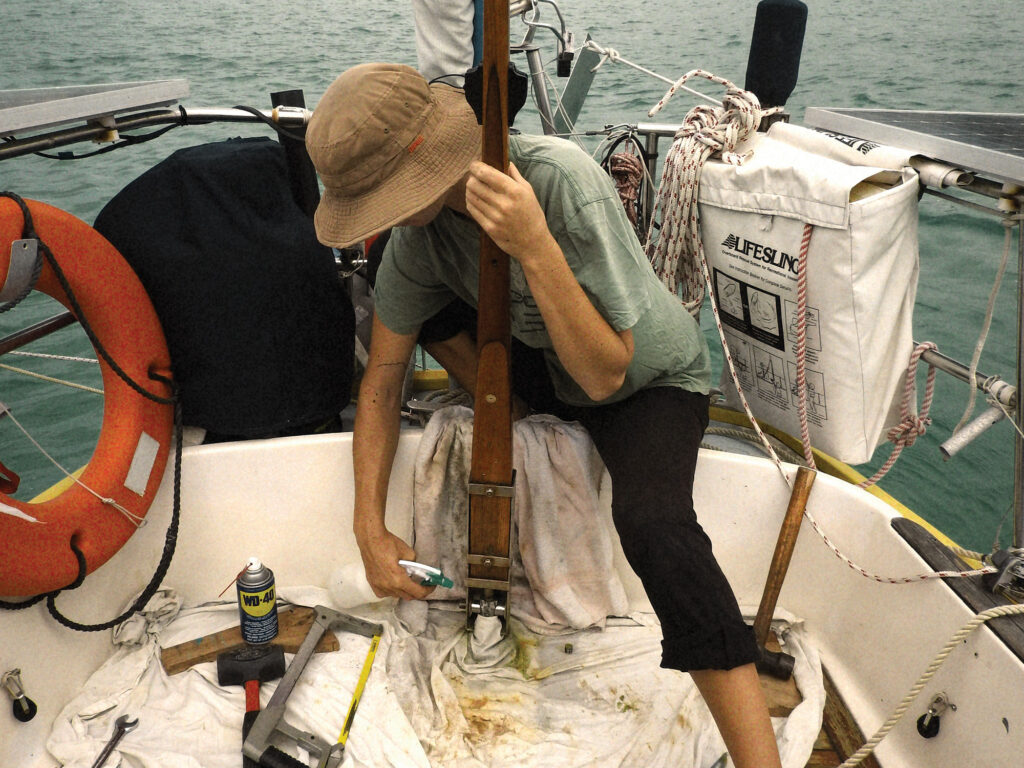
While anchored in San Diego, we installed a composting head system. In La Paz, Mexico, we installed a new-to-us Bomar hatch from a marine consignment store; a neighboring cruiser let us borrow a generator to run our power tools, and loaned us a hookah system to do some underwater work.
In between larger projects, we did what felt like a million small tasks. We almost always worked on the boat while anchored out, and we carried a generous quantity of supplies: jugs of epoxy, boxes of stainless-steel hardware, and all of Liam’s tools. They took stowage priority over nonessential items such as spare clothes and books, but we didn’t complain (much).
The regular projects did give us a sense of rhythm. Exploring new places is a privilege, but, for me at least, it lacks a sense of purpose. Rye’s bottomless project list gave us something to work toward, and a valuable sense of accomplishment whenever we completed something successfully. Granted, many of our DIY efforts were not successful the first time around; bubbling paint, crooked cuts and stripped hardware were what we came to describe as “just a prototype.” We’ve sure learned a lot in the process.
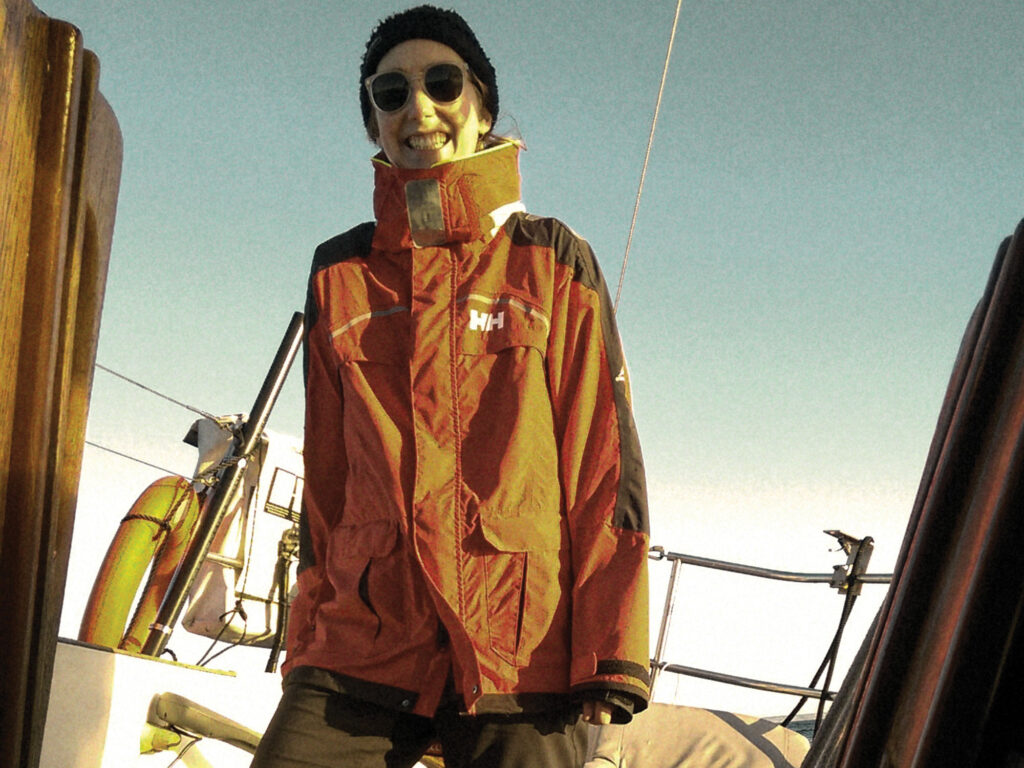
By the time we began our Pacific crossing, we had lived on board for nearly two years. Rye felt, if not perfect, at least functional. I didn’t fully appreciate how much we had learned until we arrived in the Galápagos Islands, where Liam noticed that at some point between there and Panama, we had developed a crack on the forestay tang, where the forestay connected to the bow. We also had a worrying amount of play in the tiller-rudder connection. There were no haulout facilities in the Galápagos, so we had to make repairs at anchor in a busy, rolly harbor.
Liam dived under the hull to secure the rudder with two bowline loops running from the rudder to a winch on either side of the cockpit. We didn’t want the rudder moving while we tried to pull out the pin that connected the tiller to the rudder. The pin was corroded in place; we heated it with a blowtorch to break the corrosion, and forced it out with a hammer and punch. With the tiller removed and the rudder locked in place, we measured the hole in the rudder stock and confirmed that it was the source of the wobble in the steering.
Our forestay tang was welded to the bow roller, so we had to remove the entire assembly. We tightened up the inner forestay to keep the mast securely in place, and then disconnected the forestay at its lower end. Next, we removed the bolts holding the pulpit and bow roller in place (a job that required one person wedged inside the V-berth and the other person in the dinghy, loosening the bolts between passing ships’ wakes). We pulled off the bow roller and hauled it into town to find a machinist.

We planned to have a second layer of stainless steel welded onto the existing tang to reinforce it without requiring a huge rebuild of the bow jewelry. After a conversation with a helpful neighboring cruiser who turned out to be a rigger, we were pretty confident that the small improvement would be enough to get us to New Zealand.
Liam—who communicated the job using only 10 words of basic Spanish and some detailed sign language—found a machinist who could make us a new tiller pin and weld a reinforcement onto the forestay tang. Incredibly, both jobs were done within two days—not perfectly, but well enough. I was hugely relieved because it felt a bit precarious to be sitting at anchor with no steering and the mast only partially attached.
Looking back on our journey from a comfortably landlocked desk in New Zealand, I’m surprised at what we managed to achieve with a tiny budget and our old patched-up boat. More than that, I am surprised at how much the never-ending stream of DIY projects shaped our voyage. At first, all the work seemed like a means to an end (making it to our destination without sinking), but really, our DIY projects were the constant thread of learning and satisfaction that gave our journey a sense of purpose and community.
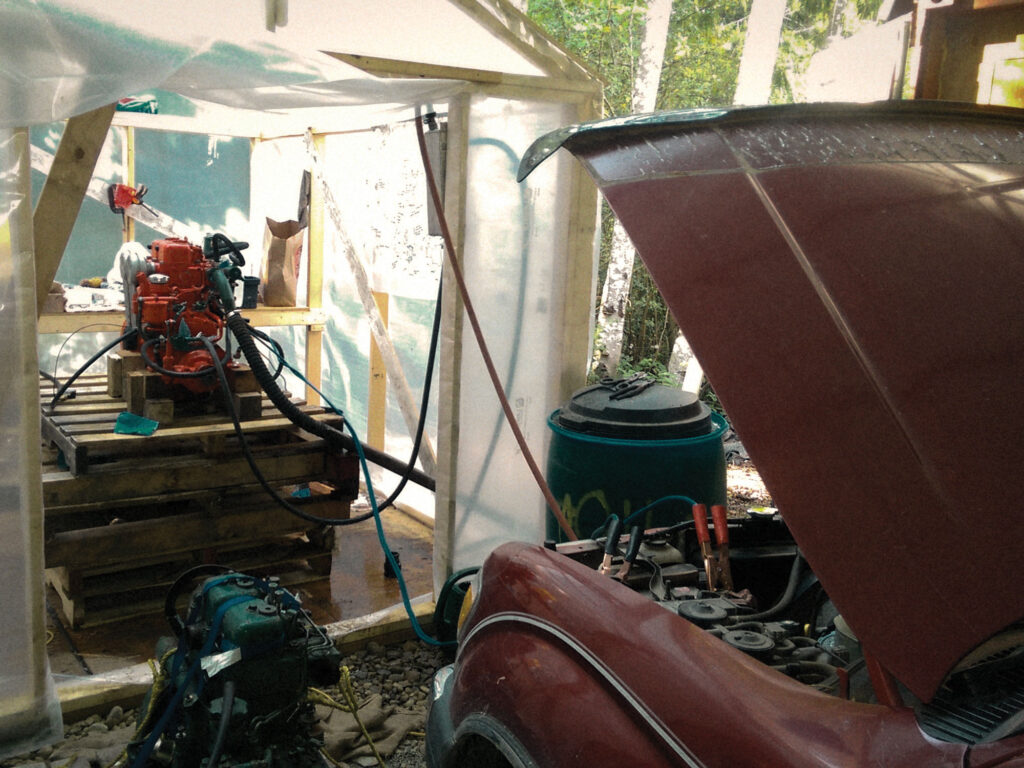
We were doing it ourselves, but we were never alone. The act of asking for help and advice, and offering the same to others, provided connection in an often isolated lifestyle.
The art and science of bricolage is embedded deeply in the cruising community. Cruisers come from different places, with different backgrounds and abilities, but we all come together to keep our boats afloat. Regardless of what’s available to us when we start, we can all end up in the same place: sailing out toward the infinite horizon.








